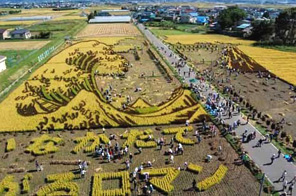National food security under cloud
KATHMANDU: Even as farmers across the country were expecting a hearty rainfall, monsoon clouds cast a shadow of despair this year around. In their desperation, farmers in several parts of the country even organised religious rituals to appease the rain gods, but to no avail.
Weathermen agreed that this summer witnessed a sluggish monsoon. Generally, mid-July is the peak time for the monsoon.
With the monsoon already delayed by 13 days, the farmers have indeed been hardly hit.
“The monsoon precipitation formed in the Low Pressure Turf over the Bay of Bengal is anticipated to come close to foothills of the high Himalayas and result in showers across the country. In contrast, this year the monsoon clouds proved elusive,” explained Keshav Das Shrestha, Senior Divisional Meteorologist, Meteorological forecasting Division.
Shrestha said that the monsoon over the Bay of Bengal avoided the east and diverted to the western Indian cities affecting weather condition in the peak monsoon season. “The productive paddy cultivation period is running out posing a threat to food security in the country. Delayed monsoon coupled with inadequate rainfall is likely to hit the national agricultural output hard,” said Dr Hari Dahal, spokesperson for the Ministry of Agriculture and Cooperatives.
Farmers in several parts of the country, including the Kathmandu Valley, are yet to plant paddy for lack of adequate rainfall. Paddy nurseries are also drying up. Farmers in the hilly areas are the hardest hit. “Untimely paddy plantation is likely to result in poor harvest,” said Krishna Paudel, spokesperson for Nepal Agricultural Research Council.
Dr Dahal also warned that harsh weather was painting a gloomy picture for the agricultural output, which contributes the biggest chunk to the Gross Domestic Products and the national economy.






